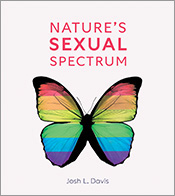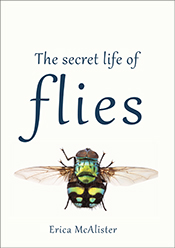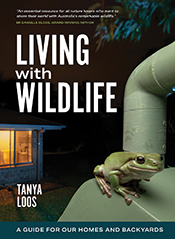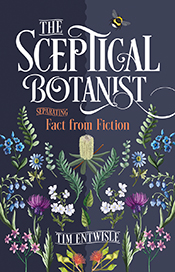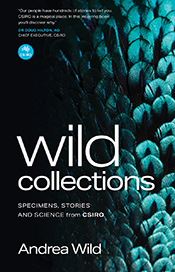Nature's Sexual Spectrum
By: Josh L. Davis
An entertaining and eye-opening exploration of the fascinating diversity found in nature.
Nature's Sexual Spectrum is a celebration of the astonishing diversity of sexual behaviour, biology and reproduction found in nature. From penguins to primates, same-sex behaviours and courtship are more widespread in the natural world than many people realize, while how nature organizes sex is not always as straightforward as usually thought. + Full description
Davis considers how, in many different organisms – both animals and plants – sexual reproduction and determination rely on a surprisingly complex interaction between genes, hormones, environment and chance. We meet turtles whose sex is determined by the incubation temperature of their eggs and butterflies that embody male and female biological tissue in the same organism. He also reveals animal and plant behaviours in nature that have previously either been covered up or explained away, and presents animal behaviours that challenge us to rethink our assumptions and prejudices.
- Short descriptionNews
Publication date: 22 July 2024
Sales in Australia and New Zealand only.
In North and South America this title is published as A Little Queer Natural History and is available through The University of Chicago Press (external link).
Elsewhere, this title is published as A Little Gay Natural History and is available through The Natural History Museum (external link).
Reviews
"A very welcome slap on the wrist for those who so ignorantly claim that same-sex love, intimacy and bonding are “unnatural”. Josh Davis’s splendid book will be a most useful settler of arguments and silencer of bigots."
Stephen Fry
"This splendid debut from Davis, a science writer for London’s Natural History Museum, surveys the dazzling variety of sexual behavior and expression in the animal, fungi, and plant kingdoms... The fascinating science makes a resounding case that the natural world features more diverse expressions of sexual activity and biological sex than commonly believed. The result is a much needed corrective to blinkered notions of what’s considered 'natural'."
Publishers Weekly, 23 March 2024
"Definitely a book for this current age […] a good, interesting, quick and quirky read."
Suzanne Mather, Western Australian Bird Notes No. 191, September 2024
"The descriptions are factual and straightforward, and the gorgeous color photographs are devoted to depicting the creatures in their environments. Emphasizing changing historical perceptions, the book highlights the work of leading researchers over the past few centuries."
Kristen Rabe, Foreword Reviews, October 2024
Details
Paperback | July 2024 | $ 29.99ISBN: 9781486318926 | 128 pages | 190 x 170 mm
Publisher: CSIRO Publishing
B&W photographs, Colour photographs, Illustrations
Features
- An entertaining and eye-opening exploration of the fascinating diversity that can be found in nature.
- Showcases an astonishing spectrum of sexual behaviour and reproduction.
- Profiles a variety of species of plants, fungi, insects, fishes, reptiles, mammals and birds.
Contents
IntroductionAdelie penguin: Homosexual couples
Mangrove killifish: Reproducing with itself
Duck-billed dinosaur: Bias in names
New Mexico whiptail lizard: Parthenogenesis
Morpho butterfly: Divided down the middle
Western lowland gorilla: Queer behaviour in apes
Domestic sheep: Can animals be gay?
Saharan cypress: Androgenesis
Bicolour parrotfish: Sex-fluid fishes
Swans: Males couples as parents
Green sea turtle: Temperature-dependent sex determination
Giraffe: Homosexuality in the mainstream
Common ash: Sexual spectrum
Common cockchafer: Historical homosexuality
European yew: Sex change
European eel: Environment-dependent sex determination
White-throated sparrow: Beyond the binary
Spotted hyena: Female-led societies
Western gull: Lesbian mothers
Common bottlenose dolphin: Explaining the gay away
Common pill woodlouse: Bacteria-dependent sex determination
Bluegill sunfish: Do animals have gender?
Common pheasant: Out-sized influence
Splitgill mushroom: Thousands of sexes
Chinese shell ginger: Temporal sex
Cane toad: Intersex animals
Moss mites: Ancient asexuals
Dungowan bush tomato: Changeable sex
Barklice: Sex-reversed genitals
Index
Further reading
References
Picture credits
Authors
Josh L. Davis is a science writer for the Natural History Museum, London, with a background in biology and conservation. As a freelance science writer, he has been published by outlets such as The Observer, The Guardian and The Times.

